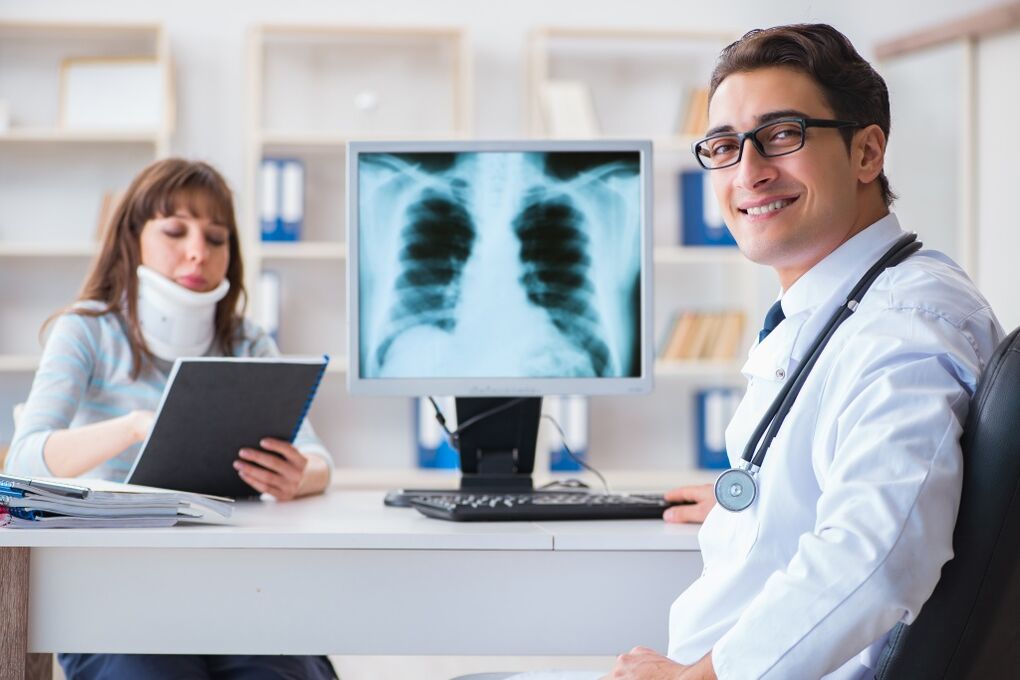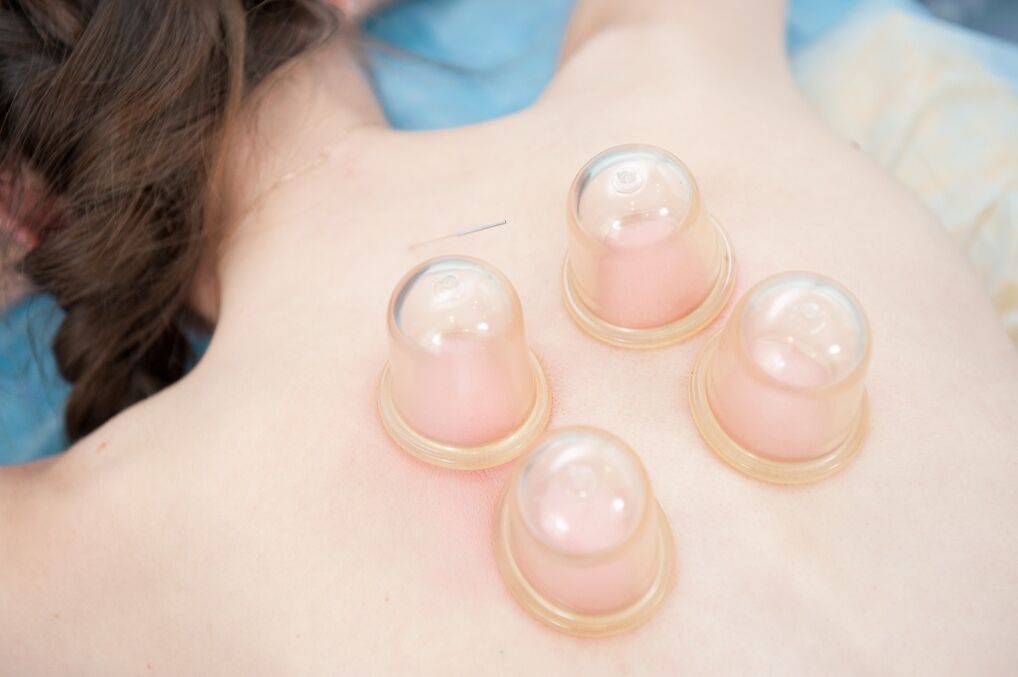
Osteochondrosis is a disease with dystrophic depth, during which there is a violation of the structure and function of the intervertebral discs.Neck osteochondrosis is a cervical spine injury.
During the pathological process with osteochondrosis of the neck pulp of the intervertebral disc (its central, soft part) ossifia, losing its depreciation properties.The cervical spine loses flexibility, mobility, blood vessels and nerve endings that violate the canals between the vertebrae.The particularity of this pathology is that its symptoms may resemble signs of other diseases, as a result of which the diagnosis of the disease is difficult and adequate treatment is prescribed too late, when irreversible changes have already begun in the cartilage tissue.
Cervical osteochondrosis, the symptoms and treatment of which will be prescribed below, as well as cervical osteochondrosis, develop in middle age and older, earlier in men, and somewhat later in women, and in recent years an important "renewal" has been observed.Of course, over the years, even in a healthy spine, the cartilage tissue of the intervertebral discs is replaced with fibrous fibers over time, it is compressed and hardened.This process is natural, it leads to a decrease in spine mobility, but by pain, as a rule, it is not accompanied, as fibrration processes do not affect nerve endings and do not provoke violations.In contrast to natural physiological, pathological changes in the intervertebral discs, characteristic of osteochondrosis, it spreads outside the cartilage, which provokes compression of blood vessels and nerve endings, pain and vascular syndrome.
Causes of cervical osteochondrosis
In part to the development of "guilty" neck osteochondrosis, the boredom of the modern person and the corresponding load distribution along the spinal column, as well as the natural processes of body tissue aging, in addition, there are a number of provocation of the development and progress of this pathology:
- sedentary lifestyle;
- long stay in the same position while working;
- excess body weight;
- continuous damage to the spine in the neck;
- chronic stress, constant nervous tension;
- Regular muscle hypothermia of the collar area (for example, when near the airflow from the air conditioner);
- Vertebral congenital abnormalities and intervertebral discs.
What is the dangerous neck osteochondrosis?
First of all, neck osteochondrosis complicates a number of movements, making them painful, making his contribution to the patient's hypodynamia, which in itself is harmful.A evil circle arises: small physical activity provokes osteochondrosis, which makes the patient even less physically active, which in turn contributes to the progression of the disease.
In addition, in the ducts along the vertebrae of the cervical region, the most important nerve plexuses and blood vessels are maintained, the irritation and violation of which cause reflex headaches, chronic dizziness, destabilization of blood pressure, which can make the patient in violation, significantly reduce the quality of his life.
The particular risk of neck osteochondrosis is in its difficult diagnosis and high probability of improper, inadequate treatment.
Symptoms of cervical osteochondrosis
The manifestations of cervical osteochondrosis are tired, which complicates the diagnosis.As a result, the patient, as a rule, addresses the doctor even when processes in the intervertebral joints were an irreversible character.The most important symptoms of neck osteochondrosis include:
- dizziness;
- headache;
- Sharp changes in blood pressure.
All listed signs are not specific, they can be indicated not only for cervical or cervical osteochondrosis, but also for many other diseases.Therefore, it is very important that any of these symptoms consult a physician and undergo a thorough medical examination to detect the true cause of the condition.
In addition, the cervix is characteristic of neck osteochondrosis, or neck pain.It can be located or on the back, "in the depth" of the neck, and give it to the shoulder, the hand.The sudden onset of a pain attack is characteristic - immediately after waking, after sneezing or coughing, laughter, sharp movement.The pain, as a rule, is moderate, is combined with a crisis in the cervical beads when trying to turn the head, and if the process has not yet accepted an irreversible current, after a while it descends itself.
Separately, it should be said for the fluctuations of blood pressure in the cervical osteochondrosis.This is an nonspecific symptom, but there are some signs that the binding of blood pressure jumps with osteochondrosis can be established.Such a connection is characterized by fluctuations in blood pressure throughout the day.On the contrary, long -term hypertension is atypical for osteochondrosis.The cause of the pressure fluctuations lies in the reflex reaction of the nerve endings on the walls of the blood vessels in response to their irritation and compression.As a rule, blood pressure opens for osteochondrosis is associated with headaches, limb pain, sensitivity to damaged muscles and skin in the collar area.
Moreover, cervical osteochondrosis is characterized by a number of syndromes (combinations of some symptoms):
- Vertebral - a number of symptoms associated with damage to the bone tissue of the vertebrae (neck pain when trying to turn your head, violation of cervical spine mobility, morphological changes in vertebral bodies and intervertebral discs);
- Vail artery syndrome - a number of symptoms that indicate the association of the pathological process to the vertebral arteries.With insufficient blood flow to the artery, when compressed, ears noise, dizziness, blood pressure ability, nausea to vomiting, a stunning feeling.The irritation of the nerve endings on the artery walls is manifested by migraine, the shingle of "flies in the eye" and a temporary decrease in visual acuity.Brain tissue oxygen hunger, which nourish vertebral arteries, manifest from fading, chronic drowsiness, a constant headache, a feeling of weakness, a decrease in concentration of attention and performance.The syndrome is characteristic not only of osteochondrosis, but also for atherosclerosis and other pathologies of circulatory disorders in the vertebral arteries;
- Koreshka - It occurs due to compression of the spinal nerve roots, one -sided loss is characteristic.Typical symptoms: pain, damaged sensitivity, paresis and paralysis of the hands, face and neck;
- cardiac - A number of symptoms that occur as a result of heart reflex disorders (pain, burning after sternum, shortness of breath, tachycardia).
The degree of osteochondrosis of the neck
First degree - characterizes the initial stage of the disease, clinically manifested by neck pain after sudden movements, sneezing.The pain is acute, resembling electric current discharge.At the same time, damage to the intervertebral disc capsule is morphologically, which provokes irritation of nerve endings.Pain in the neck can be associated with pain in the back of the head, noise in the ear, staring at his eyes.
The second degree - the period of progression of the disease.At this stage, the pain in the neck becomes constant, there is a narrowing of the intervertebral holes and in this connection - the regular violation of the roots of the spinal nerves and the vessels occurring in them.The intervertebral joint capsule is thinner, the pathological mobility of the spine occurs in the area.Muscle atrophy.The fluctuation of blood pressure is characteristic.In a severe course of the disease, a "symptom of a falling head" can appear - the need to support the head by hand to relieve the pain and adjust it to a certain position.
The third degree It is characterized by the destruction of the fibrous ring of the intervertebral disc, as a result of which the complications of osteochondrosis are possible: vertebrae displacements, intervertebral hernias, spine bending.The pain is severe, gives his hand to the shoulder, in addition to the neck pain is disturbed by headaches, dizziness, sharp jumps in blood pressure, the patient loses the ability to work.
Diagnosis of cervical osteochondrosis

The diagnosis of "neck osteochondrosis" is made on the basis of examination and surveying the patient, the degree of morphological changes in the intervertebral discs helps create an X -ray examination and magnetic resonance imaging.Moreover, it is important to exclude other diseases with similar symptoms: heart attack, hypertension, organic brain damage, migraine, which requires consultation of related specialists.
Treatment of cervical back osteochondrosis
The volume of therapeutic measures for neck osteochondrosis depends directly on the degree of the pathological process.Treatment will be more effective than before it starts, so it is especially important to consult a doctor in a timely manner, with the first episodes of neck pain, dizziness, not hoping that the painful symptoms will pass on their own.
In the initial phase of the disease, the treatment of cervical spine osteochondrosis is reduced to eliminate pain syndrome using NSAIDs and sedatives of local (oil, creams) or systemic (tablets, injections) of action.Moreover, the restoration of normal metabolic processes in the cartilage tissue of the intervertebral disc plays a major role, for which chondroprotectors - drugs that stimulate metabolism in the cartilage and normalization of its structure are used.The chondroprotectors stimulate the production processes in the cartoglycan cartilage tissue that form the cartilage structure.At the same time, inflammation and devastating processes in cartilage tissue are suppressed.
With the progress of the pathological process, an addition to the prescribed therapy can serve as antispas and relaxing muscle to eliminate muscle spasm.The doctor may recommend the novocaine blockade to relieve pain, however, this method can be attributed exclusively palliative, allowing the elimination of painful symptoms but does not affect the course of osteochondrosis of the neck.With advanced osteochondrosis, surgical treatment can be the only effective medicine, as the possibilities of conservative treatment at this stage are exhausted.
Physiotherapeutic methods of osteochondrosis treatment have proven themselves well: electrophoresis, magnetotherapy, ultrasonic therapy, mud.Important traditional parts of complex osteochondrosis treatment are massage and manual therapy. It should be remembered that all methods of physiotherapy should only be used if the neck osteochondrosis is in the phase of forgiveness, otherwise you can only activate the pathological process.Anydo manipulation during massage should be as gentle as possible.
It should be remembered that all methods of physiotherapy should only be used if the neck osteochondrosis is in the phase of forgiveness, otherwise you can only activate the pathological process.Anydo manipulation during massage should be as gentle as possible.
Physical Medical Education (Exercise therapy) with osteochondrosis of the cervical
An important role in the treatment of osteochondrosis is obtained from exercise therapy.The methods of physiotherapy exercises are different, however, their general essence is unchanged: the neat restoration of the healthy mobility of the affected spine area and, accompanied by this stimulation of blood supply and eating tissue.With the diagnosis of "cervical osteochondrosis", the exercises should be as frugal as possible, the load on the back is minimal.Unexpected curves, rotational movements, deep tendencies are unacceptable, which can contribute to damage to the intervertebral fusion capsule and worsen the pathological process.
Prevention of cervical osteochondrosis
Partialization has not been returned, and therefore it is advisable to prevent its progress than to try to treat the consequences.The basis of preventing cervical osteochondrosis is a healthy lifestyle, reasonable mobility, rational nutrition, body weight control, small breaks in gymnastics with reduced professional activity.Moreover, in the first signs of cervical spine dysfunction, you should consult a physician and if there are indications to start taking chondroprotectors that will help normalize metabolism in cartabolism and slowly slow the progression of the disease.


















